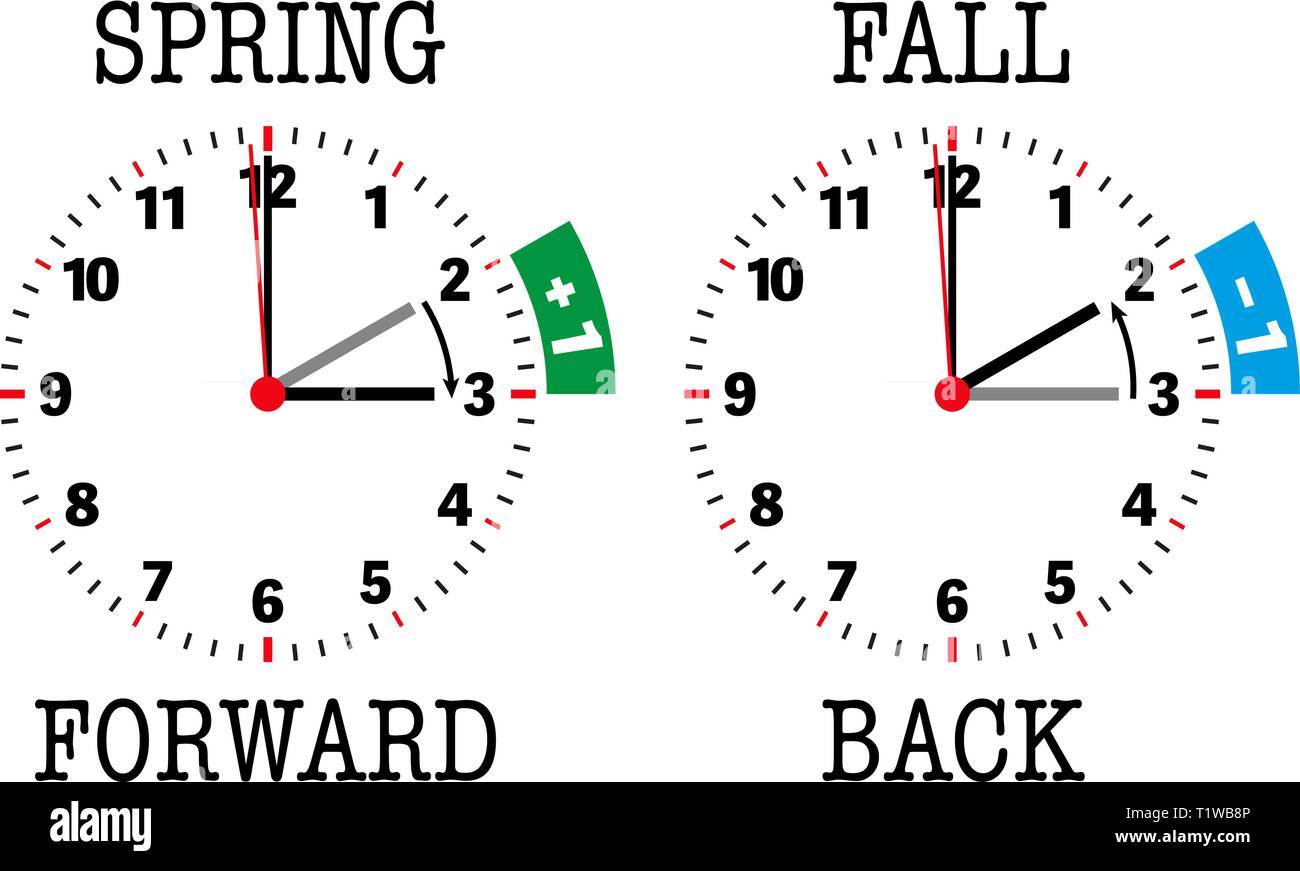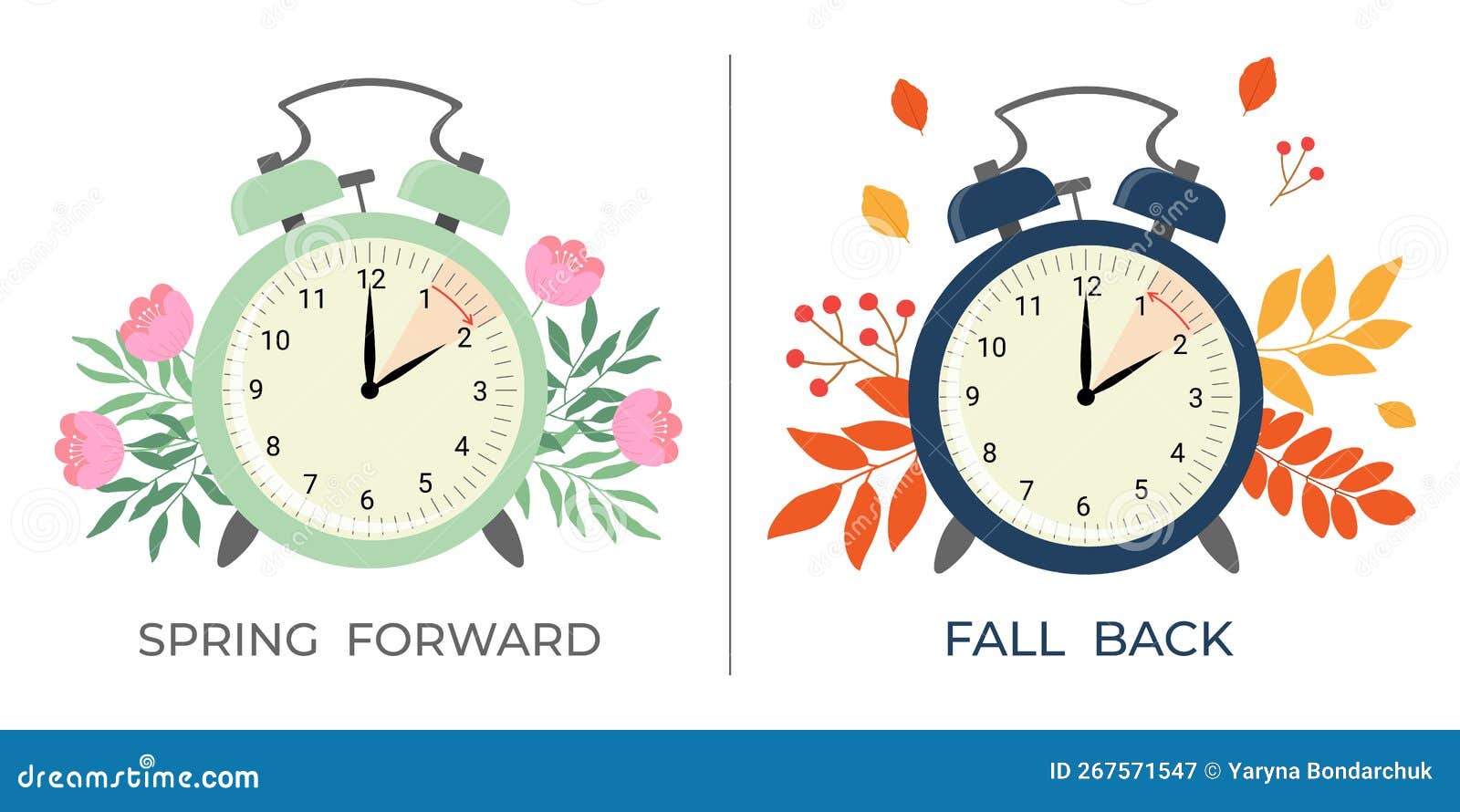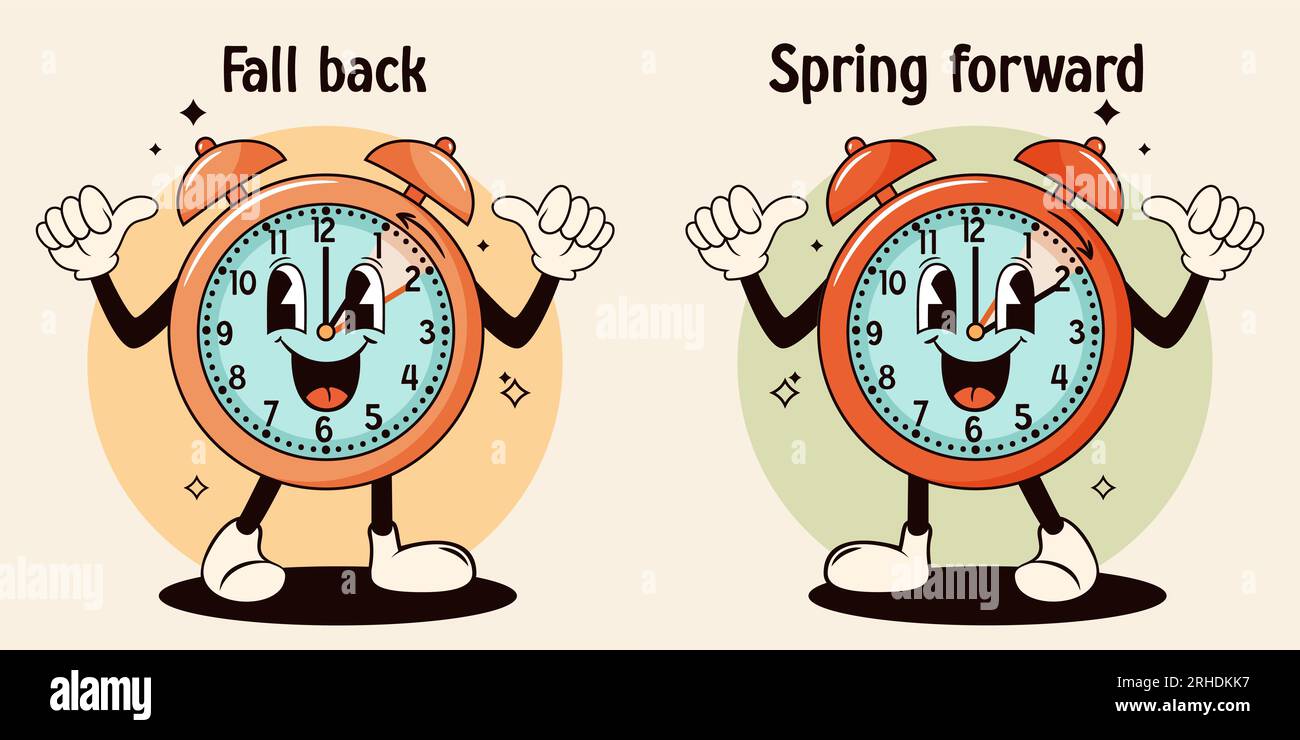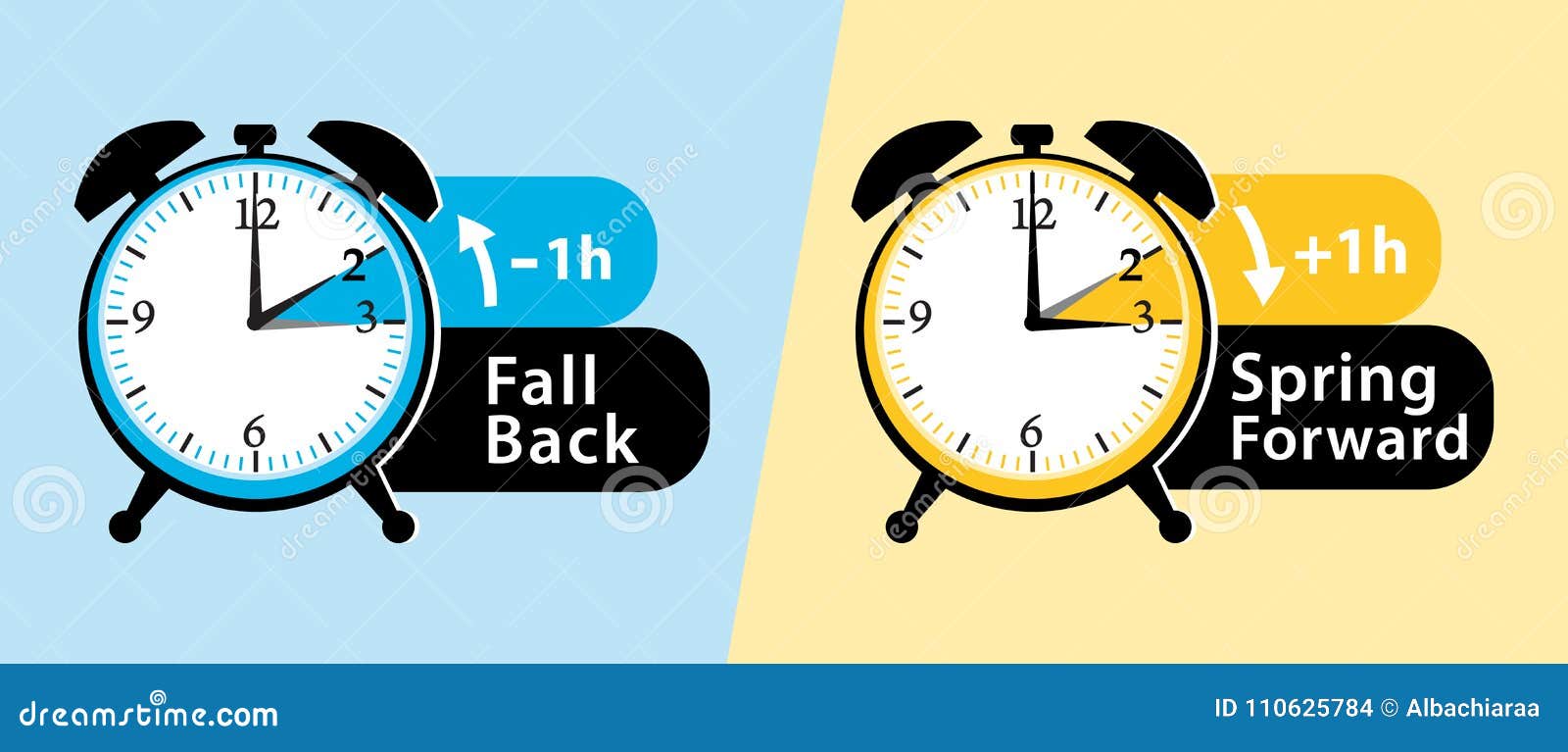Daylight saving time ends on the first sunday of november each year. “spring forward, fall back” is one of the little sayings used to remember which way to set your watch. Why do we lose an hour in march?
Daylight saving time, fall back and spring forward illustration. Vector
We spring forward, losing an hour, in march to add more
We must inform you that the correct terminology is daylight saving, not daylight savings.
(spring forward, fall back) confuses and disorients thousands, if not millions of people. When will we “fall back” in 2025? Daylight saving time 2025 ends on the first sunday in november. We “fall back” one hour and return to standard time on sunday, november 2, 2025 at 2 a.m.
On this date becomes 1 a.m.) be sure to set your clocks back one hour before bed saturday night! When we spring forward in march, it's to add more daylight in the evenings. 3, when we fall back and gain an extra hour of sleep. Next year, it will begin again on sunday, march 9

When do the clocks fall back for 2024 time change?
Our clocks will fall back at 2 a.m. Why does time change at 2 a.m. The phrase spring forward, fall back helps people remember how daylight saving time affects their clocks. On the second sunday in march, we set our clocks forward one hour ahead of standard time (spring forward, even though spring doesn't begin until late march).
We fall back at 2 a.m. On the first sunday in november by setting Our clocks will fall back one hour at 2 a.m. When is daylight saving time?

Daylight saving time begins on the second sunday of march when we turn our clocks forward an hour.
Here's a look at when exactly we spring forward and how daylight saving time works. What time exactly does the time change for daylight saving 2025? The time change took place at 2 a.m. “spring forward, fall back” is one of the little sayings used to remember which way to set your watch.
You set your clock forward one hour in the spring when dst starts (= lose 1 hour), and back one hour when dst ends in the fall (= regain 1 hour). We lose an hour of sleep when the clocks spring forward and are turned ahead at 2 a.m. For one hour when daylight saving time begins. In the fall when dst ends, clocks fall back an hour in

Gain an hour, lose an hour.
No matter how you refer to it, daylight saving time is coming to an end − for 2024. When does 2025 daylight saving time spring forward start, dst fall back end? Daylight saving time begins on sunday, march 9, and ends on nov. Chris sims is a digital content producer
So why do we spring forward in march and fall back each november? The idea of dst dates centuries back When daylight saving time begins in march, clocks spring forward one hour, and when it ends in november, clocks fall back one hour. Here are six questions answered about the upcoming time

Today, most americans spring forward (turn clocks ahead and lose an hour) on the second sunday in march (at 2:00 a.m.) and fall back (turn clocks back and gain an hour) on the first sunday in november (at 2:00 a.m.).
See how your sunrise and sunset times will change with our sunrise/set calculator. When daylight saving time begins in march, clocks spring forward one hour, and when it ends in november, clocks fall back one hour. Here are six questions answered about the upcoming time change. When does daylight saving time end in 2024?
This year, daylight saving time ends sunday, nov. 3, with clocks rolling back one hour at 2 a.m. Which way do the clocks go? Spring forward or fall back is one way to remember which way to set your clocks at the start and end of daylight saving time (dst).
People often use the simple mnemonic spring forward, fall back to remember to set clocks forward one hour (e.g., from 2 a.m.
To 3 a.m.) in the spring and backward one hour (e.g., from 2 a.m. What's public opinion on 'falling back' and 'springing When dst starts in the spring, our clocks are set forward by a certain amount of time, usually by one hour. This means that one hour is skipped, and on the clock, the day of the dst transition has only 23 hours.
“spring forward, fall back” is one of the little sayings used to remember which way to set your watch. You set your clock forward one hour in the spring when dst starts (= lose 1 hour), and back one hour when dst ends in the fall (= regain 1 hour). Today, most americans spring forward (turn clocks ahead and lose an hour) on the second sunday in march (at 2:00 a.m.) and fall back (turn clocks back and gain an hour) on the first sunday in november (at 2:00 a.m.). See how your sunrise and sunset times will change with our sunrise/set calculator.
When daylight saving time begins in march, clocks spring forward one hour, and when it ends in november, clocks fall back one hour.
Here are six questions answered about the upcoming time change. When does daylight saving time end in 2024? This year, daylight saving time ends sunday, nov. 3, with clocks rolling back one hour at 2 a.m.
Which way do the clocks go? Spring forward or fall back is one way to remember which way to set your clocks at the start and end of daylight saving time (dst). People often use the simple mnemonic spring forward, fall back to remember to set clocks forward one hour (e.g., from 2 a.m. To 3 a.m.) in the spring and backward one hour (e.g., from 2 a.m.
What's public opinion on 'falling back' and 'springing
When dst starts in the spring, our clocks are set forward by a certain amount of time, usually by one hour. This means that one hour is skipped, and on the clock, the day of the dst transition has only 23 hours.